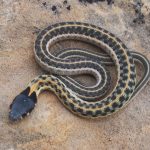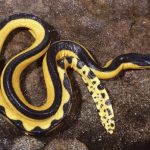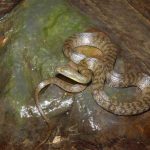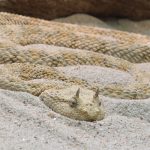Indian python is a large python species occurring in the Indian Subcontinent and Southeast Asia. Like all pythons, it is a nonvenomous constrictor. The carnivorous species is known to be lethargic and slow moving. The snake is an adept swimmer.
| Kingdom |
Animalia |
| Phylum |
Chordata |
| Subphylum |
Vertebrata |
| Class |
Reptilia |
| Order |
Squamata |
| Suborder |
Serpentes |
| Family |
Pythonidae |
| Genus |
Python |
| Scientific Name |
Python molurus |
| Other Names |
Black-tailed Python, Indian Rock Python, Asian Rock Python |
| Length |
Rarely more than 3.7 m; largest recorded specimen measures 6.4 m |
| Weight |
32 to 55 kg; largest recorded specimen may weigh more than 91 kg |
| Color |
Whitish or yellowish with tan to dark brown blotched patterns |
| Distribution |
India, southern Nepal, Sri Lanka, Pakistan, Bhutan, Bangladesh |
| Habitat |
Grasslands, swamps, marshes, woodlands, rocky foothills, open jungle, river valleys, abandoned mammal burrows, dense water reeds, hollow trees, mangrove thickets |
| Diet |
Mammals, birds, reptiles |
| Hibernation Fact |
Hibernate during winter months |
| Predators |
Juveniles fall prey to eagles, crocodiles, tigers, leopards, hyenas |
| Venom Fact |
Nonvenomous |
| Mode of Reproduction |
Oviparous (egg laying) |
| Clutch Size |
Up to 100 eggs |
| Incubation Period |
2 to 3 months |
| Reproductive Age |
2 to 3 years of age |
| Average Lifespan |
20 to 30 years |
| IUCN Conservation Status |
Near Threatened |
Indian Python Pictures Gallery
-
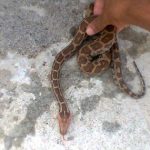
-
Baby Indian Python
-
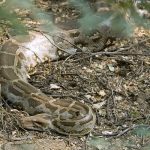
-
Indian Python Images
-
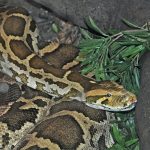
-
Indian Python Photos
-
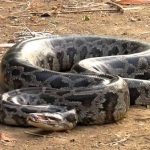
-
Indian Python Pictures
-

-
Indian Python Snake
-
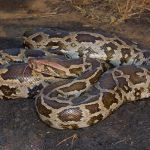
-
Indian Python
-

-
Indian Pythons
-
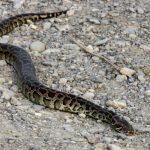
-
Indian Rock Python
-
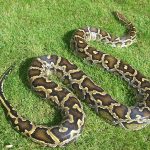
-
Python Molurus
-
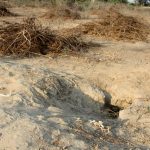
-
Indian Python Habitat
-

-
Indian Python Size
-
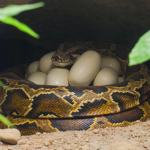
-
Indian Python Eggs














